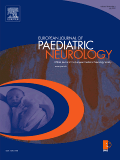
EUROPEAN JOURNAL OF PAEDIATRIC NEUROLOGY
Scope & Guideline
Leading the way in pediatric neurological advancements.
Introduction
Aims and Scopes
- Child Neurology Research:
The journal emphasizes research related to various pediatric neurological disorders, including epilepsy, cerebral palsy, and neurogenetic conditions. - Diagnostic and Biomarker Studies:
There is a strong focus on the development and validation of diagnostic tools and biomarkers that can aid in the early identification and management of pediatric neurological disorders. - Clinical Trials and Treatment Approaches:
The journal publishes findings from clinical trials and studies on treatment modalities, including pharmacological interventions and novel therapies for childhood neurological conditions. - Longitudinal and Follow-Up Studies:
Research exploring long-term outcomes and follow-up of children with neurological disorders is a significant aspect, providing insights into the progression and management of these conditions. - Quality of Life and Psychosocial Aspects:
The journal also addresses the quality of life and psychosocial impacts of neurological disorders on children and their families, highlighting the importance of holistic care. - Multidisciplinary Approaches:
There is an emphasis on collaborative research efforts that involve various specialties within pediatric care, reflecting the multifaceted nature of neurological disorders.
Trending and Emerging
- Neurogenetics and Personalized Medicine:
There is an increasing focus on neurogenetic disorders and the application of personalized medicine approaches, highlighting the importance of genetic testing and tailored treatment strategies for pediatric patients. - Innovative Therapeutics and Clinical Trials:
The journal is witnessing a surge in studies related to innovative therapies, particularly gene therapies and novel pharmacological treatments, indicating a dynamic shift in treatment paradigms for pediatric neurological conditions. - Neuroinflammation and Autoimmune Disorders:
Research exploring the role of neuroinflammation and autoimmune mechanisms in pediatric neurological disorders is gaining traction, reflecting a growing interest in understanding these complex interactions. - Longitudinal Studies of Neurodevelopmental Outcomes:
Emerging themes include longitudinal studies that track neurodevelopmental outcomes over time, providing valuable insights into the long-term impacts of early interventions and conditions. - Integration of Technology in Assessment and Treatment:
There is a trend towards utilizing technology, such as telemedicine and digital tools for assessment and intervention, reflecting the ongoing digital transformation in healthcare. - Focus on Quality of Life and Psychosocial Impacts:
An increasing number of studies are addressing the psychosocial aspects and quality of life for children with neurological disorders, emphasizing the need for comprehensive care that goes beyond clinical symptoms.
Declining or Waning
- Traditional Neurology without Emphasis on Genetics:
There appears to be a decline in studies focusing solely on traditional neurological assessments without incorporating genetic or molecular insights, as the field increasingly recognizes the role of genetics in pediatric neurology. - Generalized Studies on Common Disorders:
Research that broadly addresses common pediatric neurological disorders without specificity or novel insights is becoming less frequent, as the journal shifts towards more specialized and innovative topics. - Outdated Therapeutic Approaches:
There is a noticeable reduction in publications centered on older therapeutic strategies that lack contemporary evidence or advancements, reflecting a shift towards evidence-based and modern treatment paradigms. - Single-Center Studies:
The journal seems to be moving away from single-center studies that do not provide broader implications or multicentric perspectives, favoring research with wider applicability and collaborative frameworks.
Similar Journals

Annals of Clinical and Translational Neurology
Shaping the Landscape of Neurological ResearchAnnals of Clinical and Translational Neurology is a premier journal published by WILEY, focusing on the fields of neurology and neuroscience. Since its inception in 2014, it has established itself as an Open Access platform, providing unrestricted access to cutting-edge research to promote scientific collaboration and innovation. With an impressive Impact Factor residing in the top quartile (Q1) for both clinical neurology and miscellaneous neuroscience in 2023, this journal ranks #52 out of 400 in the Neurology category and #22 out of 113 in General Neuroscience, indicating its significant contribution to the field. The journal welcomes submissions that address emerging trends and challenges in translational neurology, aiming to bridge the gap between laboratory research and clinical practice. By disseminating high-quality research and fostering a community of scholars, Annals of Clinical and Translational Neurology plays a vital role in advancing our understanding of neurological disorders and improving patient care worldwide.
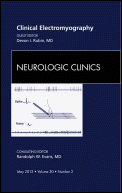
NEUROLOGIC CLINICS
Illuminating the complexities of the nervous system.NEUROLOGIC CLINICS, published by W B SAUNDERS CO-ELSEVIER INC, stands as a leading journal in the field of clinical neurology, boasting an impressive impact factor that reflects its significant contributions to neurological research and clinical practice. With an ISSN of 0733-8619 and E-ISSN of 1557-9875, this journal provides a critical platform for the dissemination of innovative research, case studies, and reviews focusing on various aspects of neurology, from diagnosis to treatment interventions. As part of its commitment to advancing the understanding of neurological disorders, NEUROLOGIC CLINICS is categorized in the Q2 quartile for Neurology (clinical) in 2023, indicating its robust standing within the academic community. It is recognized for its rigorous peer-review process and is indexed in Scopus, ranking #147 out of 400 in its field with a notable 63rd percentile. The journal, which dates back to 1983 and continues to publish vital findings up to 2024, is an invaluable resource for researchers, healthcare professionals, and students dedicated to enhancing their knowledge and clinical skills in neurology. Subscribe now to stay abreast of current advancements and expand your expertise in this dynamic field.

CESKA A SLOVENSKA NEUROLOGIE A NEUROCHIRURGIE
Fostering Innovation in Neurological SciencesCESKA A SLOVENSKA NEUROLOGIE A NEUROCHIRURGIE is a prominent scientific journal focusing on the fields of neurology and neurosurgery, published by the esteemed Czech Medical Society. Since its inception in 1973, the journal has aimed to disseminate significant research and advancements in clinical neurology and surgery, contributing to the body of knowledge for professionals and researchers in these fields. Operating under a non-open access model, it maintains a dedicated readership interested in valuable insights from the latest studies and clinical practices. The journal is currently classified in the Q4 category in both Neurology (Clinical) and Surgery, reflecting its ongoing efforts to provide a platform for impactful research, despite being ranked in the lower percentiles within Scopus. Based in Prague, Czech Republic, this journal not only serves as a repository of clinical findings but also encourages collaboration and scholarly dialogue among neurologists and neurosurgeons, driving the field towards further innovations in patient care. With coverage extending from 1973 to 2024, it stands as a key resource for those committed to advancing neurological and surgical sciences.
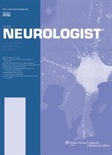
NEUROLOGIST
Bridging Research and Practice in NeurologyNEUROLOGIST, an esteemed journal published by Lippincott Williams & Wilkins, serves as a vital resource in the fields of Neurology and Medicine. With an ISSN of 1074-7931 and an E-ISSN of 2331-2637, this journal has been dedicated to advancing the understanding of neurological disorders since its inception in 1996, with continual contributions through 2024. Achieving a respectable Q3 rank in both Medicine (miscellaneous) and Neurology (clinical), it provides an essential platform for disseminating innovative research and clinical studies. Although it is not an open-access publication, NEUROLOGIST promotes a rich exchange of ideas and findings for researchers, healthcare professionals, and students alike, helping to bridge the gaps in neurological research and practice. The journal is recognized for its commitment to enhancing clinical practice and research methodology, making it a valuable asset for anyone engaged in the dynamic field of neurology.
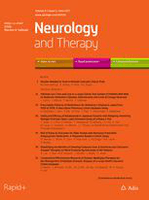
Neurology and Therapy
Advancing Neurological Health Through Open Access ResearchNeurology and Therapy, published by SPRINGER LONDON LTD, stands as a pivotal platform for researchers and practitioners in the field of neurology and its therapeutic applications. This Open Access journal, active since 2012, facilitates the dissemination of innovative studies and cutting-edge findings aimed at improving neurological health. With an impressive ranking in the 2023 Scopus Rankings, where it holds a Q2 category in Neurology and a Q1 category in Clinical Neurology, it underscores its prominence in advancing neurological research. The journal's intriguing scope encompasses a wide-ranging exploration of neurological disorders, treatment methodologies, and healthcare strategies, making it a valuable resource for those vested in enhancing patient outcomes. With an appealing average impact factor, readers are encouraged to dive into the latest advancements and engage with the scholarly discussions that are shaping the future of neurology.
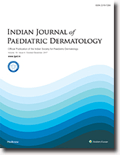
Indian Journal of Paediatric Dermatology
Shaping the future of children's dermatological care.Indian Journal of Paediatric Dermatology (ISSN: 2319-7250; E-ISSN: 2319-7269), published by Wolters Kluwer Medknow Publications, stands as a pivotal resource in the specialized field of paediatric dermatology. As a peer-reviewed open access journal since 2013, it aims to disseminate cutting-edge research, clinical practices, and innovative developments that cater to the specific dermatological needs of children. The journal provides an essential forum for collaboration among researchers, clinicians, and students, facilitating the sharing of knowledge on a wide array of topics, including skin conditions unique to paediatric populations, treatment methodologies, and advancements in dermatological care. With a commitment to enhancing the understanding and treatment of paediatric skin diseases, this journal plays a critical role in shaping best practices and informing future research directions in a rapidly evolving field.

EPILEPSIA
Connecting researchers to revolutionize epilepsy care.EPILEPSIA is a premier academic journal published by Wiley, with a storied history dating back to 1909, making it a cornerstone in the field of epilepsy research and neurology. With an impressive impact factor reflecting its robust contribution to the academic community, EPILEPSIA is categorized in the top quartile (Q1) in both neurology and clinical neurology as of 2023, underscoring its significance and prestige. The journal is ranked #15 out of 192 in Neuroscience & Neurology and #34 out of 400 in Medicine & Neurology (clinical) within Scopus, indicating its essential role in advancing knowledge and treatments related to epilepsy. Researchers and clinicians are encouraged to contribute groundbreaking studies, case reports, and reviews that inform best practices and improve patient outcomes. Although EPILEPSIA currently does not offer open access options, its detailed exploration of both fundamental and clinical aspects of epilepsy ensures wide dissemination of crucial findings among professionals and students alike, furthering the understanding and management of this complex condition.
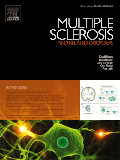
Multiple Sclerosis and Related Disorders
Innovating treatment strategies for related disorders.Multiple Sclerosis and Related Disorders, published by Elsevier Science Ltd, is a leading journal that serves as a vital resource in the field of neurology, particularly focused on multiple sclerosis and its associated conditions. This esteemed journal, which holds a Q1 ranking in Medicine (miscellaneous) and Q2 ranking in both Neurology and Clinical Neurology, delivers high-impact research findings and clinical insights crucial for advancing the understanding and management of multiple sclerosis. With an ISSN of 2211-0348 and an E-ISSN of 2211-0356, it provides valuable content from 2012 to 2024 aimed at researchers, healthcare professionals, and students dedicated to improving patient outcomes and fostering innovative strategies in treatment. Additionally, the journal's presence in the Scopus rankings highlights its relevance and influence in the academic community, ranking 121 out of 400 in Clinical Neurology and 59 out of 192 in Neuroscience. This comprehensive platform encourages the dissemination of cutting-edge knowledge and clinical practices, making it an essential tool for those committed to the field of neurology and related research.

Journal of Central Nervous System Disease
Transforming research into solutions for CNS diseases.Welcome to the Journal of Central Nervous System Disease, a premier Open Access publication dedicated to advancing the understanding of neurological disorders and their underlying mechanisms. Published by SAGE Publications Ltd, this esteemed journal has been serving the scientific community since 2009 and is committed to disseminating high-quality research that spans from clinical neurology to cellular and molecular neuroscience. With an impressive impact factor, the journal ranks within the top quartiles—Q2 in both Neurology and Clinical Neurology, and Q3 in Cellular and Molecular Neuroscience as of 2023. The journal's indexing in Scopus reflects its significant contribution to the field, being ranked #83 out of 400 in clinical neurology and #38 out of 97 in cellular and molecular neuroscience. This essential resource, based in the United States, is crucial for researchers, clinicians, and students looking to stay at the forefront of neurological science. By providing Open Access options, we ensure that groundbreaking research is readily available to a global audience, fostering collaboration and innovation in the study of central nervous system diseases.
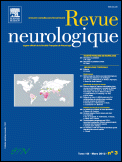
REVUE NEUROLOGIQUE
Driving Innovation in Neurological Disorders and TreatmentsREVUE NEUROLOGIQUE, published by MASSON EDITEUR, is a prestigious academic journal that plays an essential role in the field of neurology. With a rich history spanning from 1946 to the present, this journal focuses on both foundational and clinical aspects of neurology, underscoring its significance within the medical community. Holding an impressive Q2 ranking in both general and clinical neurology categories as of 2023, REVUE NEUROLOGIQUE is recognized for its contribution to advancing neurological science, as evidenced by its Scopus rankings, with a notable position in the 62nd percentile for clinical neurology. The journal fosters an environment for rigorous research and is instrumental for professionals and scholars aiming to stay abreast of the latest developments in neurological disorders and treatments. Although it is not an open-access publication, it offers a wealth of vital research through its issues, appealing to those engaged in both clinical practice and academic research in neurology.